Artemisinin-based combination therapy for treating uncomplicated Plasmodium vivax malaria
- PMID: 24163021
- PMCID: PMC6532731
- DOI: 10.1002/14651858.CD008492.pub3
Artemisinin-based combination therapy for treating uncomplicated Plasmodium vivax malaria
Abstract
Background: Plasmodium vivax is an important cause of malaria in many parts of Asia and South America, and parasite resistance to the standard treatment (chloroquine) is now high in some parts of Oceania. This review aims to assess the current treatment options in the light of increasing chloroquine resistance.
Objectives: To compare artemisinin-based combination therapies (ACTs) with alternative antimalarial regimens for treating acute uncomplicated P. vivax malaria.
Search methods: We searched the Cochrane Infectious Disease Group Specialized Register; the Cochrane Central Register of Controlled Trials (CENTRAL); MEDLINE; EMBASE; LILACS; and the metaRegister of Controlled Trials (mRCT) up to 28 March 2013 using "vivax" and "arte* OR dihydroarte*" as search terms.
Selection criteria: Randomized controlled trials comparing ACTs versus standard therapy, or comparing alternative ACTs, in adults and children with uncomplicated P. vivax malaria.
Data collection and analysis: Two authors independently assessed trials for eligibility and risk of bias, and extracted data. We used recurrent parasitaemia prior to day 28 as a proxy for effective treatment of the blood stage parasite, and compared drug treatments using risk ratios (RR) and 95% confidence intervals (CIs). We used trials following patients for longer than 28 days to assess the duration of the post-treatment prophylactic effect of ACTs. We assessed the quality of the evidence using the GRADE approach.
Main results: We included 14 trials, that enrolled 2592 participants, and were all conducted in Asia and Oceania between 2002 and 2011. ACTs versus chloroquine: ACTs clear parasites from the peripheral blood quicker than chloroquine monotherapy (parasitaemia after 24 hours of treatment: RR 0.42, 95% CI 0.36 to 0.50, four trials, 1652 participants, high quality evidence).In settings where chloroquine remains effective, ACTs are as effective as chloroquine at preventing recurrent parasitaemias before day 28 (RR 0.58, 95% CI 0.18 to 1.90, five trials, 1622 participants, high quality evidence). In four of these trials, recurrent parasitaemias before day 28 were very low following treatment with both chloroquine and ACTs. The fifth trial, from Thailand in 2011, found increased recurrent parasitaemias following treatment with chloroquine (9%), while they remained low following ACT (2%) (RR 0.25, 95% CI 0.09 to 0.66, one trial, 437 participants).ACT combinations with long half-lives probably also provide a longer prophylactic effect after treatment, with significantly fewer recurrent parasitaemias between day 28 and day 42 or day 63 (RR 0.57, 95% CI 0.40 to 0.82, three trials, 1066 participants, moderate quality evidence). One trial, from Cambodia, Thailand, India and Indonesia, gave additional primaquine to both treatment groups to reduce the risk of spontaneous relapses. Recurrent parasitaemias after day 28 were lower than seen in the trials that did not give primaquine, but the ACT still appeared to have an advantage (RR 0.27, 95% CI 0.08 to 0.94, one trial, 376 participants, low quality evidence). ACTs versus alternative ACTs: In high transmission settings, dihydroartemisinin-piperaquine is probably superior to artemether-lumefantrine, artesunate plus sulphadoxine-pyrimethamine and artesunate plus amodiaquine at preventing recurrent parasitaemias before day 28 (RR 0.20, 95% CI 0.08 to 0.49, three trials, 334 participants, moderate quality evidence).Dihydroartemisinin-piperaquine may also have an improved post-treatment prophylactic effect lasting for up to six weeks, and this effect may be present even when primaquine is also given to achieve radical cure (RR 0.21, 95% CI 0.10 to 0.46, two trials, 179 participants, low quality evidence).The data available from low transmission settings is too limited to reliably assess the relative effectiveness of ACTs.
Authors' conclusions: ACTs appear at least equivalent to chloroquine at effectively treating the blood stage of P. vivax infection. Even in areas where chloroquine remains effective, this finding may allow for simplified protocols for treating all forms of malaria with ACTs. In areas where chloroquine no longer cures the infection, ACTs offer an effective alternative.Dihydroartemisinin-piperaquine is the most studied ACT. It may provide a longer period of post-treatment prophylaxis than artemether-lumefantrine or artesunate plus amodiaquine. This effect may be clinically important in high transmission settings whether primaquine is also given or not.
Conflict of interest statement
None known.
Figures
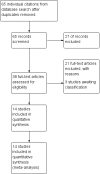
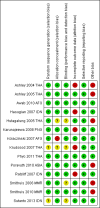















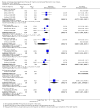
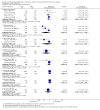
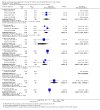


Update of
-
Artemisinin-based combination therapy for treating uncomplicated Plasmodium vivax malaria.Cochrane Database Syst Rev. 2011 Jul 6;(7):CD008492. doi: 10.1002/14651858.CD008492.pub2. Cochrane Database Syst Rev. 2011. Update in: Cochrane Database Syst Rev. 2013 Oct 25;(10):CD008492. doi: 10.1002/14651858.CD008492.pub3. PMID: 21735431 Updated.
References
References to studies included in this review
Ashley 2004 THA {published and unpublished data}
-
- Ashley EA, Krudsood S, Phaiphun L, Srivilairit S, McGready R, Leowattana W, et al. Randomized, controlled dose‐optimization studies of dihydroartemisinin‐piperaquine for the treatment of uncomplicated multidrug‐resistant falciparum malaria in Thailand. Journal of Infectious Diseases 2004;190(10):1773‐82. - PubMed
Ashley 2005 THA {published and unpublished data}
-
- Ashley EA, McGready R, Hutagalung R, Phaiphun L, Slight T, Proux S, et al. A randomized, controlled study of a simple, once‐daily regimen of dihydroartemisinin‐piperaquine for the treatment of uncomplicated, multidrug‐resistant falciparum malaria. Clinical Infectious Diseases 2005;41(4):425‐32. - PubMed
Awab 2010 AFG {published data only}
Hasugian 2007 IDN {published and unpublished data}
-
- Hasugian AR, Purba HL, Kenangalem E, Wuwung RM, Ebsworth EP, Maristela R, et al. Dihydroartemisinin‐piperaquine versus artesunate‐amodiaquine: superior efficacy and posttreatment prophylaxis against multidrug‐resistant Plasmodium falciparum and Plasmodium vivax malaria. Clinical Infectious Diseases 2007;44(8):1067‐74. - PMC - PubMed
Hutagalung 2005 THA {published and unpublished data}
-
- Hutagalung R, Paiphun L, Ashley EA, McGready R, Brockman A, Thwai KL, et al. A randomized trial of artemether‐lumefantrine versus mefloquine‐artesunate for the treatment of uncomplicated multi‐drug resistant Plasmodium falciparum on the western border of Thailand. Malaria Journal 2005;4:46. - PMC - PubMed
Karunajeewa 2008 PNG {published and unpublished data}
-
- Karunajeewa HA, Mueller I, Senn M, Lin E, Law I, Gomorrai PS, et al. A trial of combination antimalarial therapies in children from Papua New Guinea. New England Journal of Medicine 2008;359(24):2545‐57. - PubMed
Kolaczinski 2007 AFG {published data only}
-
- Kolaczinski K, Durrani N, Rahim S, Rowland M. Sulfadoxine‐pyrimethamine plus artesunate compared with chloroquine for the treatment of vivax malaria in areas co‐endemic for Plasmodium falciparum and P. vivax: a randomised non‐inferiority trial in eastern Afghanistan. Transactions of the Royal Society of Tropical Medicine and Hygeine 2007;101(11):1081‐7. - PubMed
Krudsood 2007 THA {published data only}
Phyo 2011 THA {published data only}
Poravuth 2010 ASIA {published data only}
Ratcliff 2007 IDN {published and unpublished data}
Smithuis 2006 MMR {published and unpublished data}
-
- Smithuis F, Kyaw MK, Phe O, Aye KZ, Htet L, Barends M, et al. Efficacy and effectiveness of dihydroartemisinin‐piperaquine versus artesunate‐mefloquine in falciparum malaria: an open‐label randomised comparison. Lancet 2006;367(9528):2075‐85. - PubMed
Smithuis 2010 MMR {published and unpublished data}
References to studies excluded from this review
Batty 1998 {published data only}
-
- Batty KT, Le AT, Ilett KF, Nguyen PT, Powell SM, Nguyen CH, et al. A pharmacokinetic and pharmacodynamic study of artesunate for vivax malaria. American Journal of Tropical Medicine and Hygiene 1998;59(5):823‐7. - PubMed
Betuela 2012 {published data only}
-
- Betuela I, Rosanas‐Urgell A, Kiniboro B, Stanisic DI, Samol L, Lazzari E, et al. Relapses contribute significantly to the risk of Plasmodium vivax infection and disease in Papua New Guinean children 1‐5 years of age. Journal of Infectious Diseases 2012;206(11):1771‐80. - PubMed
Dao 2007 {published data only}
-
- Dao NV, Cuong BT, Ngoa ND, Thuy le TT, The ND, Duy DN, et al. Vivax malaria: preliminary observations following a shorter course of treatment with artesunate plus primaquine. Transactions of the Royal Society of Tropical Medicine and Hygiene 2007;101(6):534‐9. - PubMed
Davis 2011 {published data only}
Douglas 2010 {published data only}
Hamedi 2004 {published data only}
-
- Hamedi Y, Safa O, Zare S, Tan‐ariya P, Kojima S, Looareesuwan S. Therapeutic efficacy of artesunate in Plasmodium vivax malaria in Thailand. Southeast Asian Journal of Tropical Medicine and Public Health 2004;35(3):570‐4. - PubMed
Hombhanje 2009 {published data only}
Leang 2013 {published data only}
Luxemburger 1996 {published data only}
-
- Luxemburger C, Price RN, Nosten F, Ter Kuile FO, Chongsuphajaisiddhi T, White NJ. Mefloquine in infants and young children. Annals of Tropical Paediatrics 1996;16(4):281‐6. - PubMed
Naing 2010 {published data only}
-
- Naing C, Aung K, Win DK, Wah MJ. Efficacy and safety of chloroquine for treatment in patients with uncomplicated Plasmodium vivax infections in endemic countries. Transactions of the Royal Society of Tropical Medicine and Hygiene 2010;104(11):695‐705. - PubMed
Price 2007a {published data only}
Pukrittayakamee 2000 {published data only}
Rueangweerayut 2012 {published data only}
-
- Rueangweerayut R, Phyo AP, Uthaisin C, Poravuth Y, Binh TQ, Tinto H, et al. Pyronaridine‐artesunate versus mefloquine plus artesunate for malaria. New England Journal of Medicine 2012;366(14):1298‐309. - PubMed
Senn 2013 {published data only}
-
- Senn N, Rarau P, Manong D, Salib M, Siba P, Reeder JC, et al. Effectiveness of artemether/lumefantrine for the treatment of uncomplicated Plasmodium vivax and P. falciparum malaria in young children in Papua New Guinea. Clinical Infectious Diseases 2013;56(10):1413‐20. - PubMed
Thimasarn 1997 {published data only}
-
- Thimasarn K, Sirichaisinthop J, Chanyakhun P, Palananth C, Rooney W. A comparative study of artesunate and artemether in combination with mefloquine on multidrug resistant falciparum malaria in eastern Thailand. Southeast Asian Journal of Tropical Medicine and Public Health 1997;28(3):465‐71. - PubMed
Tjitra 2002 {published data only}
-
- Tjitra E, Baker J, Suprianto S, Cheng Q, Anstey NM. Therapeutic efficacies of artesunate‐sulfadoxine‐pyrimethamine and chloroquine‐sulfadoxine‐pyrimethamine in vivax malaria pilot studies: relationship to Plasmodium vivax dhfr mutations. Antimicrobial Agents and Chemotherapy 2002;46(12):3947‐53. - PMC - PubMed
Tjitra 2012 {published data only}
-
- Tjitra E, Hasugian AR, Siswantoro H, Prasetyorini B, Ekowatiningsih R, Yusnita EA, et al. Efficacy and safety of artemisinin‐naphthoquine versus dihydroartemisinin‐piperaquine in adult patients with uncomplicated malaria: a multi‐centre study in Indonesia. Malaria Journal 2012;11:153. - PMC - PubMed
van Vugt 1998 {published data only}
Yeshiwondim 2010 {published data only}
-
- Yeshiwondim AK, Tekle AH, Dengela DO, Yohannes AM, Teklehaimanot A. Therapeutic efficacy of chloroquine and chloroquine plus primaquine for the treatment of Plasmodium vivax in Ethiopia. Acta Tropica 2010;113(2):105‐13. - PubMed
Yohannes 2011 {published data only}
References to studies awaiting assessment
Janssens 2007 {published and unpublished data}
-
- Janssens B, Herp M, Goubert L, Chan S, Uong S, Nong S, et al. A randomized open study to assess the efficacy and tolerability of dihydroartemisinin‐piperaquine for the treatment of uncomplicated falciparum malaria in Cambodia. Tropical Medicine and International Health 2007;12(2):251‐9. - PubMed
Shin 2011 {published data only}
-
- Shin CS, Kwak YG, Lee KD, Borghini‐Fuhrer I, Miller RM, Duparc S. Treatment of Korean vivax malaria patients with the fixed‐dose combination of pyronaridine: Artesunate. Tropical Medicine and International Health. 2011; Vol. 16:149.
van Vugt 2002 {published data only}
-
- Vugt M, Leonardi E, Phaipun L, Slight T, Thway KL, McGready R, et al. Treatment of uncomplicated multidrug‐resistant falciparum malaria with artesunate‐atovaquine‐proguanil. Clinical Infectious Diseases 2002;35(12):1498‐504. - PubMed
Additional references
Anstey 2009
-
- Anstey NM, Russell B, Yeo TW, Price RN. The pathophysiology of vivax malaria. Trends in Parasitology 2009;25(5):220‐7. - PubMed
Baird 1997
-
- Baird JK, Leksana B, Masbar S, Fryauff DJ, Sutanihardja MA, Suradi, et al. Diagnosis of resistance to chloroquine by Plasmodium vivax: timing of recurrence and whole blood chloroquine levels. American Journal of Tropical Medicine and Hygiene 1997;56(6):621‐6. - PubMed
Baird 2007
-
- Baird JK, Schwartz E, Hoffman SL. Prevention and treatment of vivax malaria. Current Infectious Disease Reports 2007;9(1):39‐46. - PubMed
Baird 2009
Barcus 2007
-
- Barcus JM, Basri H, Picarima H, Manyakori C, Sekartuti, Elyazar I, et al. Demographic risk factors for severe and fatal vivax and falciparum malaria among hospital admissions in northeastern Indonesian Papua. American Journal of Tropical Medicine and Hygiene 2007;77(5):984‐91. - PubMed
Bloland 2003
-
- Bloland PB. Assessment and monitoring of antimalarial drug efficacy for the treatment of uncomplicated falciparum malaria [WHO/HTM/RBM/2003.50]. Geneva: World Health Organization, 2003.
Collins 1996
-
- Collins WE, Jeffery GM. Primaquine resistance in Plasmodium vivax. American Journal of Tropical Medicine and Hygiene 1996;55(3):243‐9. - PubMed
Dondorp 2009
Galappaththy 2007
Genton 2008
Gething 2012
Hasugian 2007
-
- Hasugian AR, Purba HL, Kenangalem E, Wuwung RM, Ebsworth EP, Maristela R, et al. Dihydroartemisinin‐piperaquine versus artesunate‐amodiaquine: superior efficacy and posttreatment prophylaxis against multidrug‐resistant Plasmodium falciparum and Plasmodium vivax malaria. Clinical Infectious Diseases 2007;44(8):1067‐74. - PMC - PubMed
Imwong 2007
-
- Imwong M, Snounou G, Pukrittayakamee S, Tanomsing N, Kim JR, Nandy A, et al. Relapses of Plasmodium vivax infection usually result from activation of heterologous hypnozoites. Journal of Infectious Diseases 2007;195(7):927‐33. - PubMed
Karunajeewa 2008
-
- Karunajeewa HA, Mueller I, Senn M, Lin E, Law I, Gomorrai PS, et al. A trial of combination antimalarial therapies in children from Papua New Guinea. New England Journal of Medicine 2008;359(24):2545‐57. - PubMed
Kochar 2009
-
- Kochar DK, Das A, Kochar SK, Saxena V, Sirohi P, Garg S, et al. Severe Plasmodium vivax malaria: a report on serial cases from Bikaner in northwestern India. American Journal of Tropical Medicine and Hygiene 2009;80(2):194‐8. - PubMed
Mayxay 2004
-
- Mayxay M, Pukrittayakamee S, Newton PN, White NJ. Mixed‐species malaria infections in humans. Trends in Parasitology 2004;20(5):233‐40. - PubMed
Mendis 2001
-
- Mendis K, Sina BJ, Marchesini P, Carter R. The neglected burden of Plasmodium vivax infection. American Journal of Tropical Medicine and Hygiene 2001;64(1‐2 Suppl):97‐106. - PubMed
Nosten 2007
-
- Nosten F, White NJ. Artemisinin‐based combination treatment of falciparum malaria. American Journal of Tropical Medicine and Hygiene 2007;77(6 Suppl):181‐92. - PubMed
Price 1996
-
- Price RN, Nosten F, Luxemburger C, ter Kuile FO, Paiphun L, Chongsuphajaisiddhi T, et al. Effects of artemisinin derivatives on malaria transmissibility. Lancet 1996;347(9016):1654‐8. - PubMed
Price 1999
-
- Price R, Vugt M, Phaipun L, Luxemburger C, Simpson J, McGready R, et al. Adverse effects in patients with acute falciparum malaria treated with artemisinin derivatives. American Journal of Tropical Medicine and Hygiene 1999;60(4):547‐55. - PubMed
Price 2007b
Price 2009
-
- Price RN, Douglas NM, Anstey NM. New developments in Plasmodium vivax malaria: severe disease and the rise of chloroquine resistance. Current Opinion in Infectious Diseases 2009;22(5):430‐5. - PubMed
Ratcliff 2007a
-
- Ratcliff A, Siswantoro H, Kenangalem E, Wuwung M, Brockman A, Edstein MD, et al. Therapeutic response of multidrug‐resistant Plasmodium falciparum and P. vivax to chloroquine and sulfadoxine‐pyrimethamine in southern Papua, Indonesia. Transactions of the Royal Society of Tropical Medicine and Hygiene 2007;101(4):351‐9. - PMC - PubMed
Ratcliff 2007b
Review Manager 5 [Computer program]
-
- The Nordic Cochrane Centre, The Cochrane Collaboration. Review Manager (RevMan). Version 5.2. Copenhagen: The Nordic Cochrane Centre, The Cochrane Collaboration, 2012.
Sinclair 2009
Sumawinata 2003
-
- Sumawinata IW, Bernadeta, Leksana B, Sutamihardja A, Purnomo, Subianto B, et al. Very high risk of therapeutic failure with chloroquine for uncomplicated Plasmodium falciparum and P. vivax malaria in Indonesian Papua. American Journal of Tropical Medicine and Hygiene 2003;68(4):416‐20. - PubMed
Sutanto 2009
-
- Sutanto I, Suprijanto S, Nurhayati, Manoempil P, Baird JK. Resistance to chloroquine by Plasmodium vivax at Alor in the Lesser Sundas Archipelago in eastern Indonesia. American Journal of Tropical Medicine and Hygiene 2009;81(2):338‐42. - PubMed
Targett 2001
-
- Targett G, Drakeley C, Jawara M, Seidlein L, Coleman R, Deen J, et al. Artesunate reduces but does not prevent posttreatment transmission of Plasmodium falciparum to Anopheles gambiae. Journal of Infectious Diseases 2001;183(8):1254‐9. - PubMed
Taylor 2004
-
- Taylor WR, White NJ. Antimalarial drug toxicity: a review. Drug Safety 2004;27(1):25‐61. - PubMed
Tjitra 2008
White 1996
-
- White NJ, Olliaro PL. Strategies for the prevention of antimalarial drug resistance: rationale for combination chemotherapy for malaria. Parasitology Today 1996;12(10):399‐401. - PubMed
White 1999
-
- White NJ, Nosten F, Looareesuwan S, Watkins WM, Marsh K, Snow RW, et al. Averting a malaria disaster. Lancet 1999;353(9168):1965‐7. - PubMed
White 2002
-
- White NJ. The assessment of antimalarial drug efficacy. Trends in Parasitology 2002;18(10):458‐64. - PubMed
WHO 2010
-
- World Health Organization. Guidelines for the treatment of malaria. 2nd Edition. Geneva: World Health Organization, 2010.
WHO 2012
-
- WHO. World Malaria Report. Geneva: World Health Organization, 2012.
Publication types
MeSH terms
Substances
LinkOut - more resources
Full Text Sources
Other Literature Sources

